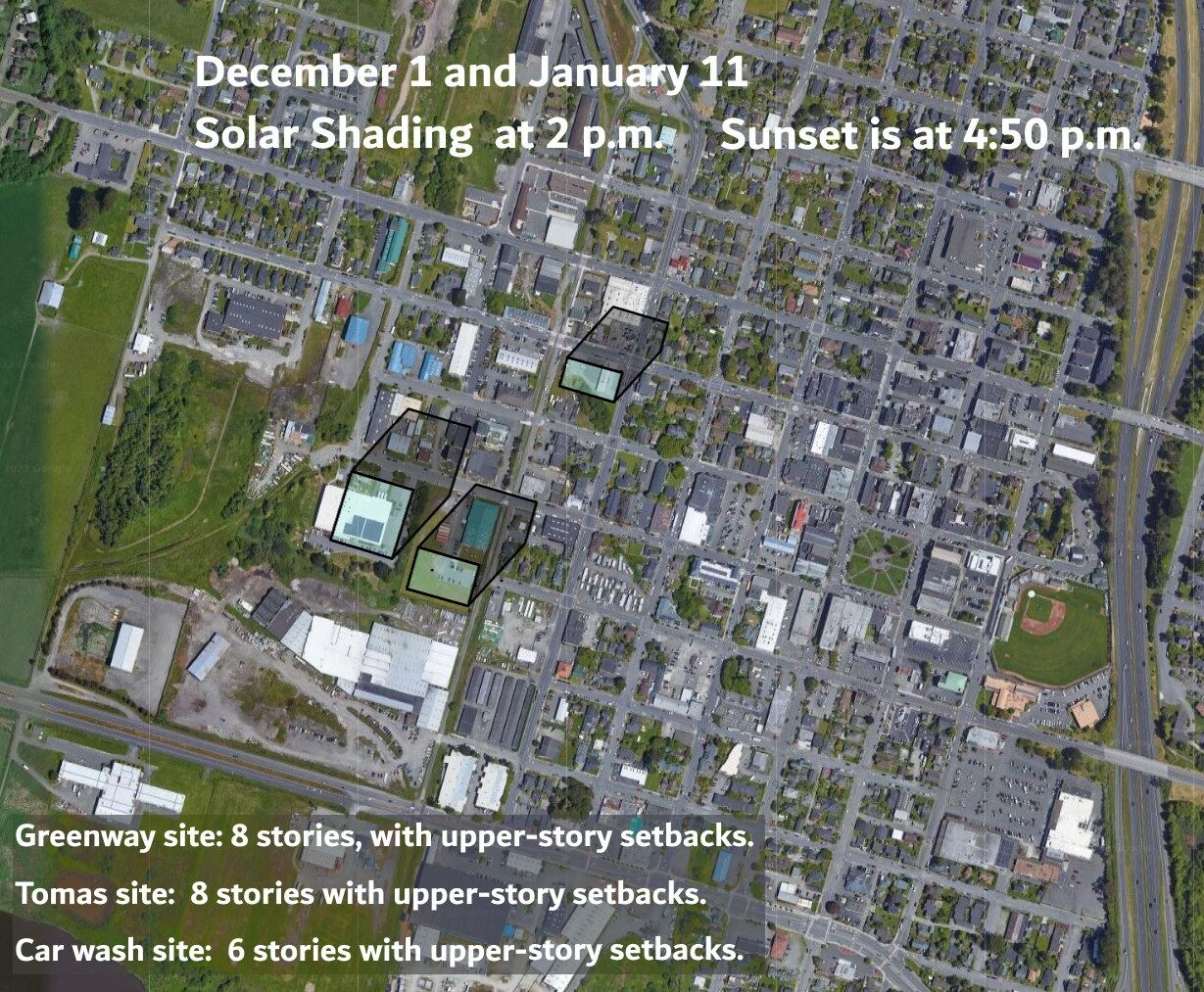The new (as of August 12) 3D modeling software will give us great views of what development will look like in the Gateway area.
New images come be added here as they come in, so come back to this page often.
The latest addition: August 22, 2022.
New images will be placed at the top. Be sure to scroll through all of them.
Here’s an imaginary scene. Coming up K Street from Samoa —
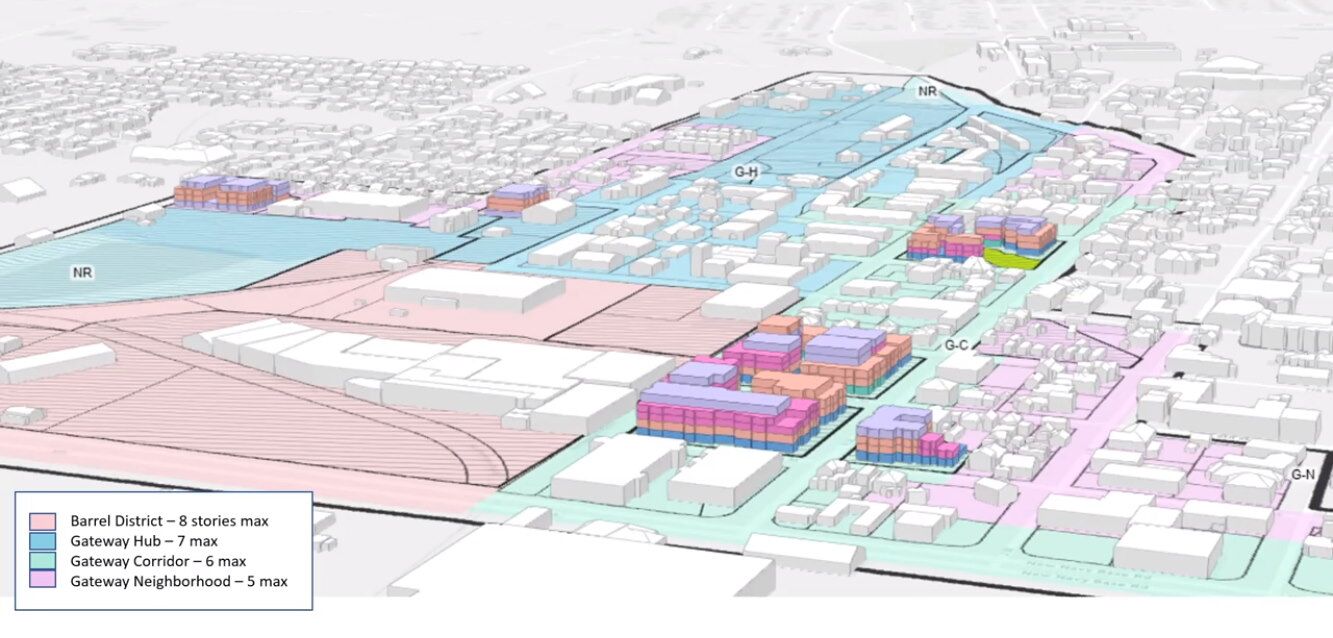
We see Bud’s Mini-Storage has been built replaced with apartments. AmeriGas is gone, replaced with apartments as well. At the back right is the car wash site. At the md-left is the east corner of 10th & O, where two steel buildings are now, and then to the left of that is new development close to 10th & Q. Across the Bud’s in the foreground is the former St. Vinnie’s store at 5th & K.
What we are looking at here is about 400 apartments, by a rough guess. If we wanted to see 2,000 apartments, it would mean perhaps FIVE TIMES the number of block-sized buildings that we see here.
This imaginary scene shows L Street as a road. At the Tuesday, August 23rd meeting of a joint study session for the City Council / Planning Commission, the fate of the L Street path way may be determined.
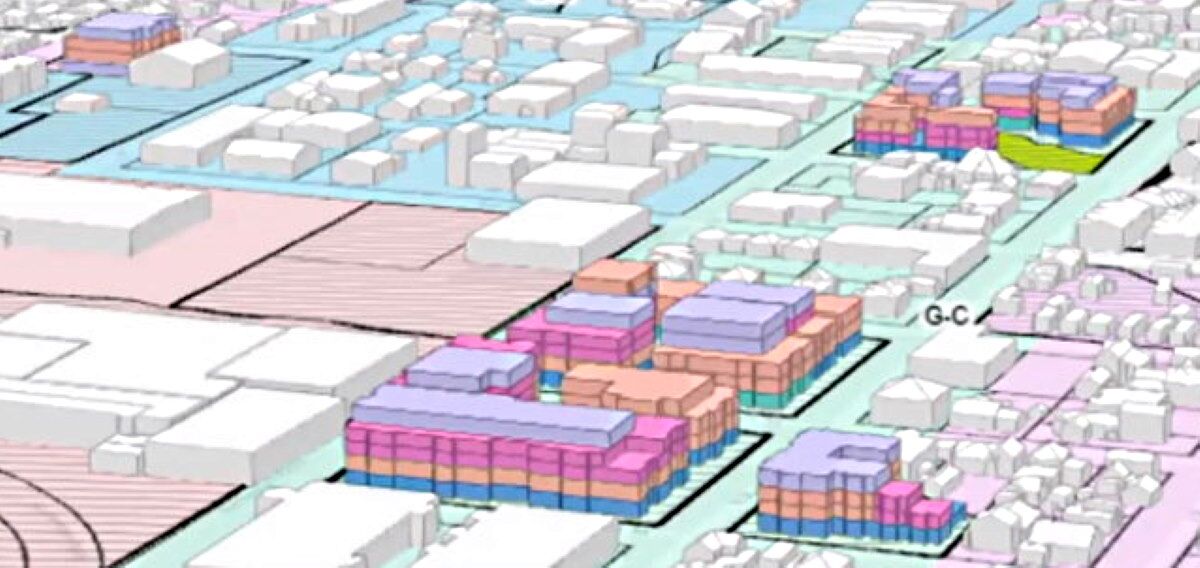 Closer look at the buildings along K Street.
Closer look at the buildings along K Street.
The Car Wash site: An imaginary proposal
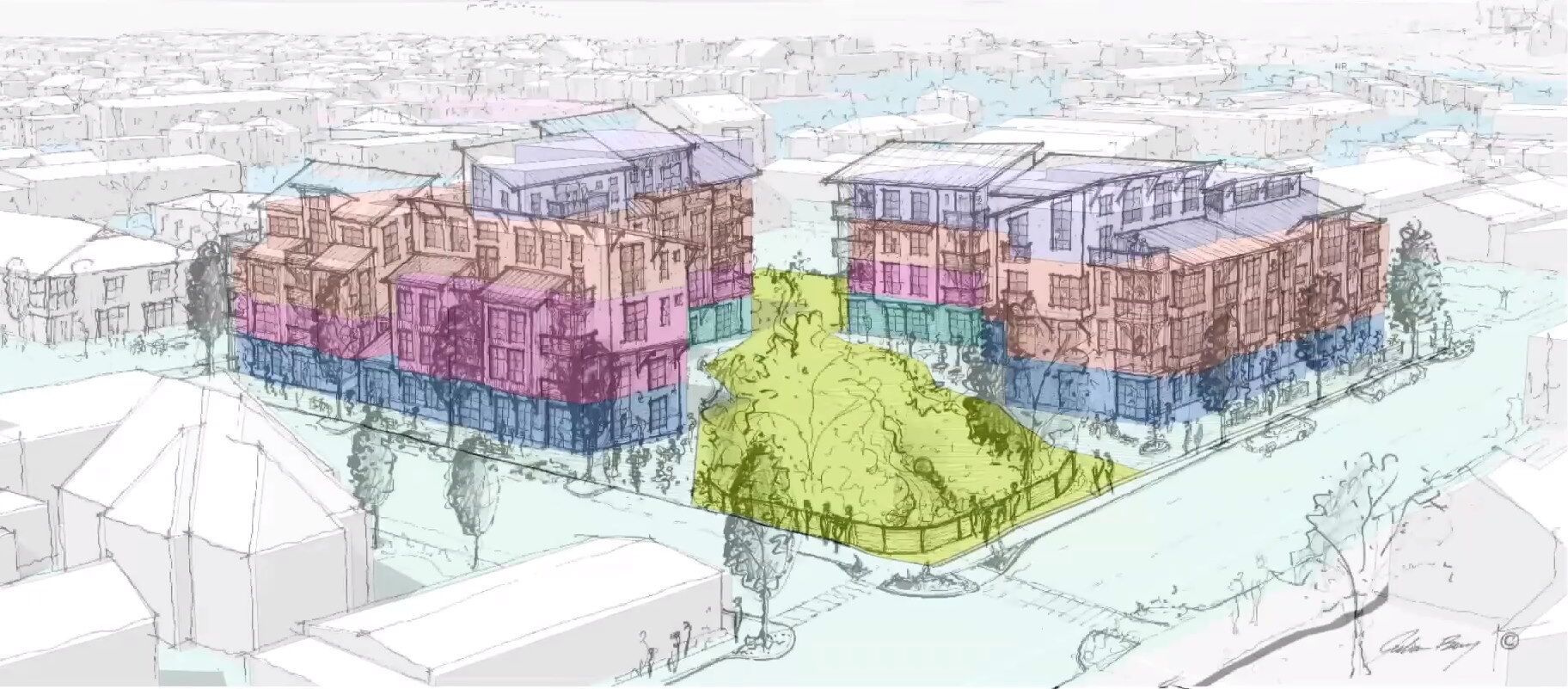
A rendering by local architect Julian Berg of a possible arrangement (not an actual proposal) for where the Arcata Car Wash currently is, on K Street between 9th & 10th. This appears to be of four-story and five-story height, and maybe 80 or 100 apartment units total, depending on the blend of studios, 1-, 2-, and 3-or-larger bedroom sizes.
At the upper-middle left is the Northcoast Children’s Services building; across the street from that is the Creamery building. The green area in the foreground is Jolly Giant Creek. This rendering seems to show K Street as a 2-way street and the L Street area preserved as a pathway and Linear Park. In a real building design, there would be height set-back requirements for buildings along the L Street park, so as to lessen the solar shading of the morning sun. Image taken from time 15:35 of the video #1, or 15:58 of the full video — only displayed in color for a second or two, and so shown here so we can look at it more fully.
There is a some setback from the parcel lot line, to allow for wider sidewalks, and some upper floor setback also, to lessen the impact of the height of the building.
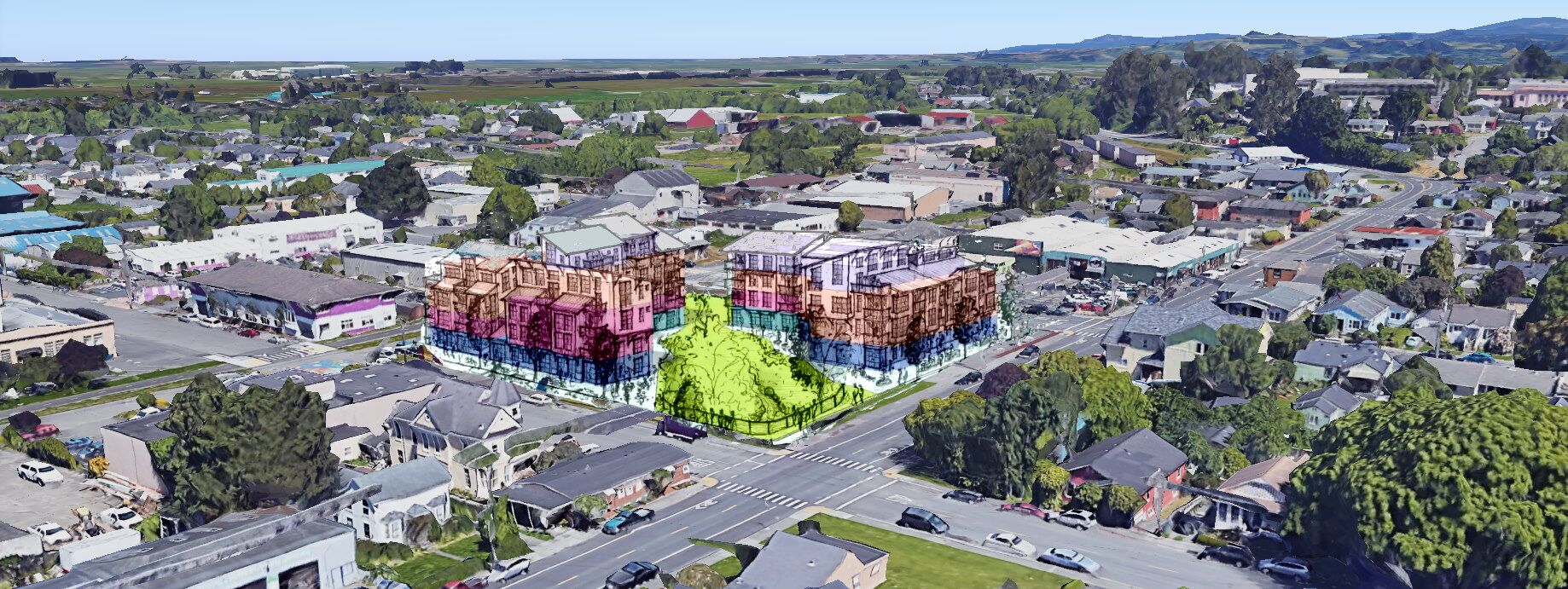
Here’s the above rendering adjusted for scale and placed onto a Google Earth image. (Not an official image — I made this from the 3D rendering, above.) The perspective and sizing are not exact, but are fairly close. What do think, Reader? A handful of 4-story buildings (or 5-stories, with appropriate upper story setbacks) might be okay… but if there were a strip of buildings of this size along K Street, it might be a bit odd to say the least. The two structures here look to be about 80 apartments, plus the ground-level commercial spaces.
We can note also that in this imaginary depiction, there are no (zero) parking spaces for the 150 or so driving-age residents. While we’d certainly be happy to be living in the who-knows-when future when the scourge of automobiles is gone from America, we are living in the present now. Despite the proposed Gateway Plan requirement that apartment and commercial buildings will have requirements for NO parking — zero — I believe it is likely that developers will indeed offer some parking on their sites, mainly in order to face market-based realities of attracting new tenants. If you were part of a family with children, or were opening up a shop or a business, would you want to rent a space in a building that only offered on-street parking? Or would you choose a building that had even, say, spaces for 50 cars for the 150 residents who could potentially own a car. I applaud people who can live in this society without a car, but those green-ethical folks are still very much in the minority.
 The same image as above, pulled back to see more of the Creamery District.
The same image as above, pulled back to see more of the Creamery District.

We don’t have the true 3D modeling version of what infill would look like yet, so use your imagination:
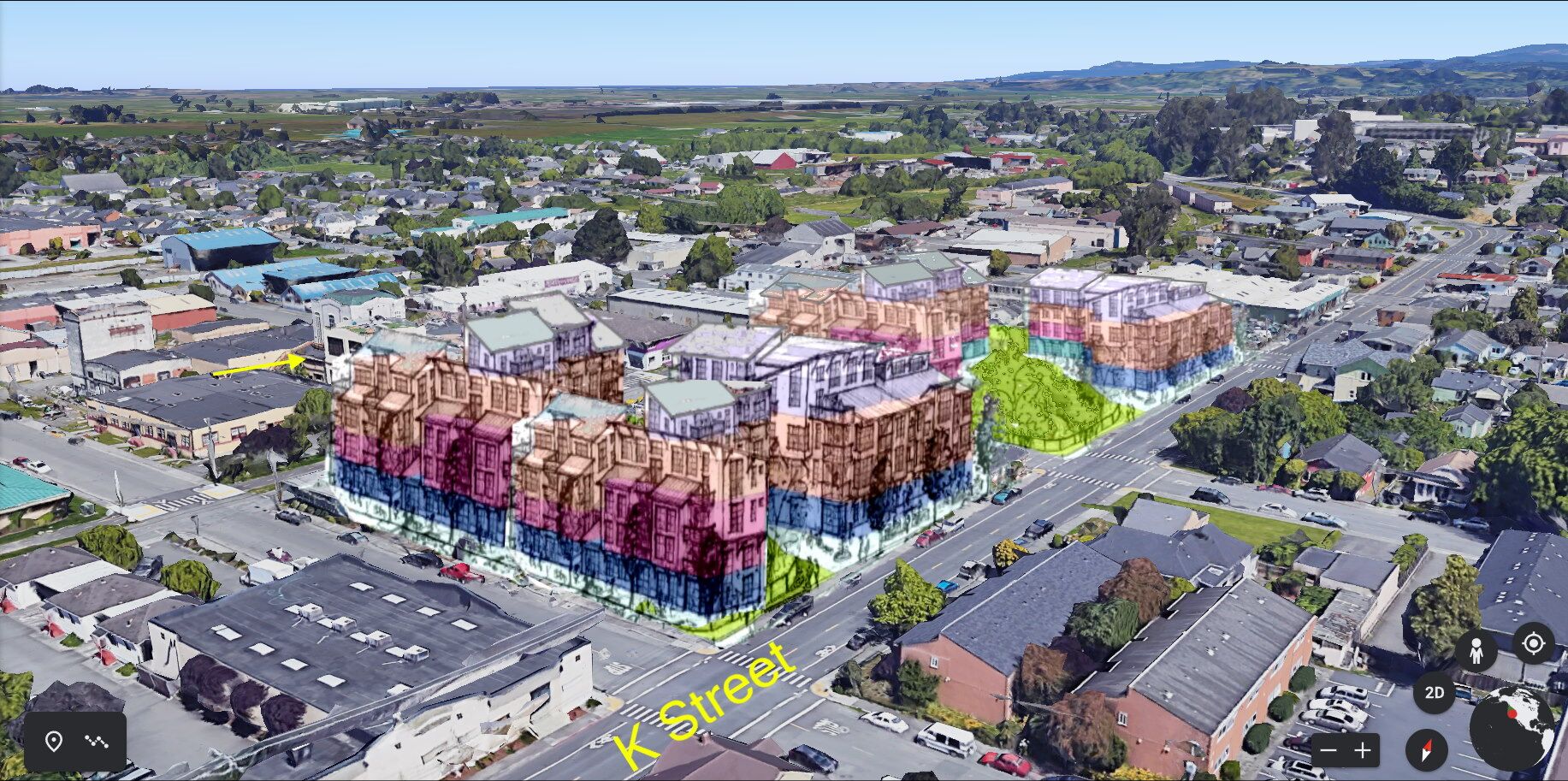
So imagine: These two blocks of buildings — with no parking, just apartments and commercial spaces on the blocks — amount to about (these are guesses; it could be less) 180 to 220 apartments — on two full blocks of Arcata real estate.
Now — Can you imagine: Ten or twenty blocks of this?
